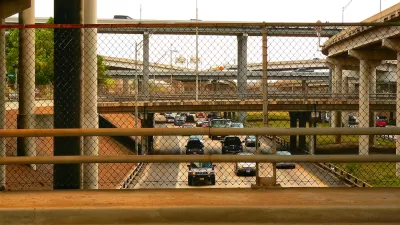Implementing a tax based on miles traveled could disincentivize purchasing more efficient cars and would do little to improve road safety, one columnist argues.

"Americans are increasingly driving hybrid and electric-only cars, reducing emissions and curbing gasoline consumption — accomplishing key goals of the Biden administration," writes Justin B. Hollander. But "[i]mposing a new Vehicle Miles Traveled (VMT) tax," included in the infrastructure bill passed by the Senate last week, "would likely flush away all those prior investments in efficiency and remove much of the incentive for someone to purchase and operate a hybrid or electric-only car."
"Presently, the 18.4 cents (or 24.4 cents for diesel) per gallon gas tax generates over $30 billion annually to help pay for a range of highway, rail and other transit costs," but "critics worry that our increasingly fuel-efficient vehicles, move towards fully electric cars and a decline in overall car use threaten the fiscal future of national transportation funding." In Hollander's view, "the answer for the U.S. DOT is to simply increase the gas tax and get more cars off our roads."
"The gas tax has been shown in numerous research studies to be an effective policy tool that discourages driving and encourages the use of public transit. If the U.S. DOT needs more money, then they ought to seek out congressional support for raising the gas tax — it has not increased since 1993," argues Hollander. "Create a brand new, national-level taxation system based on vehicle miles traveled and you will discourage the use of environmentally friendly cars and do nothing to actually make us safer from the hazards of cars and trucks."
FULL STORY: The Senate's Vehicle Miles Traveled Tax is bad for our health

Alabama: Trump Terminates Settlements for Black Communities Harmed By Raw Sewage
Trump deemed the landmark civil rights agreement “illegal DEI and environmental justice policy.”

Planetizen Federal Action Tracker
A weekly monitor of how Trump’s orders and actions are impacting planners and planning in America.

The 120 Year Old Tiny Home Villages That Sheltered San Francisco’s Earthquake Refugees
More than a century ago, San Francisco mobilized to house thousands of residents displaced by the 1906 earthquake. Could their strategy offer a model for the present?

In Both Crashes and Crime, Public Transportation is Far Safer than Driving
Contrary to popular assumptions, public transportation has far lower crash and crime rates than automobile travel. For safer communities, improve and encourage transit travel.

Report: Zoning Reforms Should Complement Nashville’s Ambitious Transit Plan
Without reform, restrictive zoning codes will limit the impact of the city’s planned transit expansion and could exclude some of the residents who depend on transit the most.

Judge Orders Release of Frozen IRA, IIJA Funding
The decision is a victory for environmental groups who charged that freezing funds for critical infrastructure and disaster response programs caused “real and irreparable harm” to communities.
Urban Design for Planners 1: Software Tools
This six-course series explores essential urban design concepts using open source software and equips planners with the tools they need to participate fully in the urban design process.
Planning for Universal Design
Learn the tools for implementing Universal Design in planning regulations.
Clanton & Associates, Inc.
Jessamine County Fiscal Court
Institute for Housing and Urban Development Studies (IHS)
City of Grandview
Harvard GSD Executive Education
Toledo-Lucas County Plan Commissions
Salt Lake City
NYU Wagner Graduate School of Public Service





























